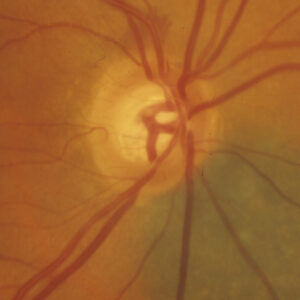ONLINE EXCLUSIVE
July 2021
by Matt Hirabayashi, MD, and Jella An, MD
Publishing original work in peer-reviewed publications serves many purposes. Contributing to the literature improves practice and allows clinicians to make a name for themselves while sharing their experience to the benefit of fellow physicians and patients.
Unfortunately, the process of collecting data, analyzing it, and writing the manuscript is only part of the difficulty. Once the writing is finished, researchers must select and submit to an appropriate journal based on the scope and scale of their work. This can be challenging in a specialty field like ophthalmology. The highest impact factor journals are typically filled with the life work of dedicated researchers and are unlikely to accept a simple report by a new clinician. There are many legitimate ophthalmology journals that are open to such projects, but the new researcher should be aware of a strange phenomenon in the world of journal publication: predatory open access journals.

Predatory open access publishing (also called “write only” or “deceptive publishing”) is a model where “editors” reach out to researchers who have published work available online and offer them the opportunity to write or submit an article for their journal that often has little to do with the writer’s field or is vague enough to almost make sense. The catch is the publication fee, which we have seen vary from a couple hundred dollars to thousands. The articles are not actually peer reviewed, and the entire scheme can jeopardize the integrity of the writer’s field.
After publishing a few articles in a legitimate open access journal, our team personally received dozens of emails daily from editors offering a quick route to publication for only a small price to pay. The most interesting thing about this is it seems reasonable at first. Some of the journals seem appropriate for ophthalmology, and for the novice researcher it may be quite tempting to go this route. In our experience, this hasn’t been limited to publication either. We have received numerous offers to attend obscure conferences in various parts of Europe and Asia, again for only a small fee.
We reviewed some of the websites for the “peer-reviewed” journals that we were asked to grace, and they are deceptively convincing. A few immediate giveaways were the massive gaps in content. One issue may have only three articles. Sadly, we have seen a few articles that were quite good and must have taken considerable time to complete and were likely trapped by this con.
New researchers would do well to know a couple of the warning signs for predatory journals. Jeffrey Beall is the scientist who coined the term “predator publishing” and has drawn significant attention to the issue. A full list of characteristics and journals/publishers identified so far are available at his website, beallslist.net.
Here are the three most common items we encountered from Mr. Beall’s list of attributes along with our own commentary:1
- “The scope of interest includes non-biomedical subjects alongside biomedical topics.” As we mentioned, most of the journals were close enough to almost make sense but many of them were either incredibly broad (yet still lacked content) or had completely disparate subjects from ophthalmology.
- “Manuscripts are requested to be submitted via email.” Most of the emails were very hasty and essentially begging for content, making the process as easy as sending an email.
- “Rapid publication is promised.” Most have effectively guaranteed a fast turnaround time.
Generally, unless it’s from a well-known journal (unlikely for a new researcher), avoid submitting to anyone specifically reaching out for content. Additionally, we wanted to mention the biggest warning sign for us: flowery language.
This became our process for vetting journals. For legitimate journals, the answers to these questions should mostly be “Yes”:
- Is the journal indexed on PubMed?
- Is the journal specifically relevant to our research topic?
- Does the journal have multiple commensurate articles in several of its issues?
It is important to mention that this behavior plagues only a small fraction of open access journals, and there are a number of legitimate, high-impact journals that charge a fee for thorough peer review and online accessibility.
When our team first began sharing observations for the betterment of ophthalmology, we almost fell for some of these propositions. Hopefully, by sharing our experience, others can avoid these traps and help maintain the integrity of scientific literature.
Relevant disclosures
An: None
Hirabayashi: None
Contact
An: anja@health.missouri.edu
Hirabayashi: mthc8b@health.missouri.edu



